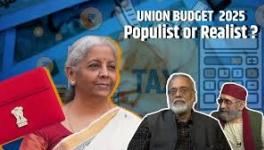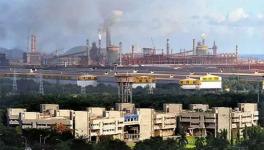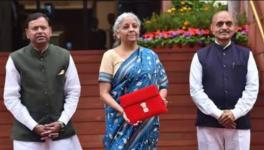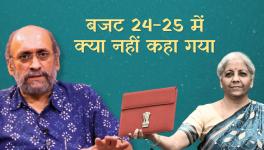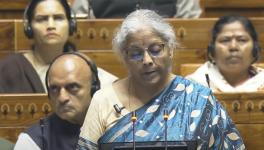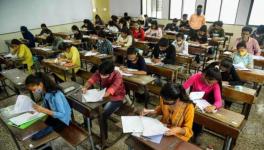A State Government Grapples with Centre Denial of GST Dues
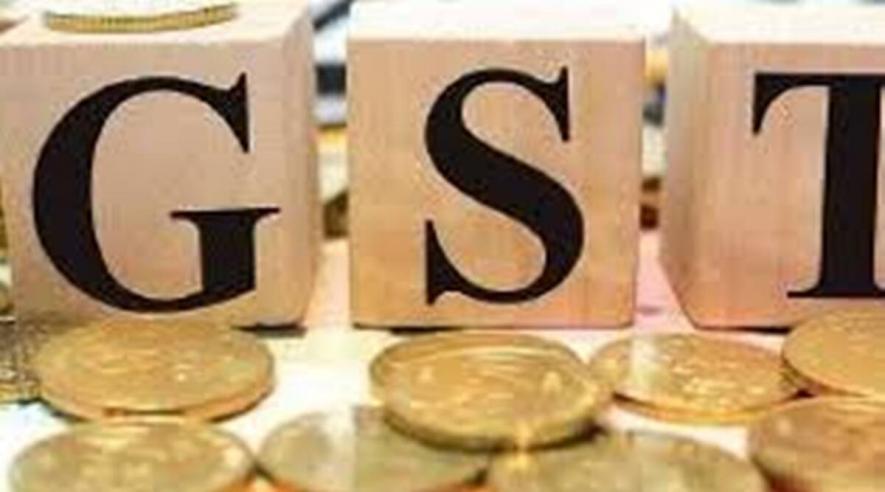
Representational Image. Image Courtesy: The Indian Express
Punjab’s financial crisis is likely to go from bad to worse due to the central government’s untenable new conditions on state’s ability to raise their borrowings. The Centre has claimed before the Parliamentary Standing Committee on Finance that due to the shortfall in revenue collection due to the Covid-19 pandemic, it will not fulfil its promise to bridge the fiscal deficit of states. From the proceedings of the 41st meeting of the GST Council chaired by the Union Finance Minister, it was evident that the appeals of Chief Ministers for their unpaid dues had no effect on the Centre. The Centre had promised state governments that for five years beginning 1 July 2017, the annual revenue shortfall on account of revised rates under GST would be paid by it. Now the Centre has not just messed up the planning and implementation of the GST over the years, it is further entangling states in a web of fresh terms and conditions. If these conditions are implemented, it is the people of Punjab—as in other states—who will suffer the most.
In the case of Punjab, the Centre did not provide any financial help even earlier. According to the Fiscal Responsibility and Budget Management Act, 2003, in the name of providing aid, the limit for borrowing has been increased beyond 3% of the state GDP, but a condition has also been imposed that for every 0.25% of loan taken beyond 2%, states will have to implement corporate-friendly policies devised by the Centre. This amounts to over-centralisation, undue expansion of the Union’s powers and it also amounts to coercing states.
Prof. Bawa Singh, an expert on economic issues, says, “The Punjab government is already burdened with questions over whether it can repay existing loans. The question is, if we are to accept the new terms and conditions for borrowings, will it have any money left for development works and for taking care of citizen’s needs. The state government needs to pay attention to these issues, which it has ignored for a long time.”
Economists in Punjab believe that the state economy will suffer immensely due to the Covid-19 pandemic, even as its debt burden keeps ballooning. Finance Minister Manpreet Singh Badal, while presenting this year’s budget, had announced that the loan burden would be Rs 2.48 lakh crore in 31 March 2021. The debt burden is estimated to be Rs 2.60 lakh crore after the central government allows a higher extent of borrowing. Besides, under the leadership of Captain Amarinder Singh, the government has raised the state’s debt burden by Rs.78,000 crore in four years. The issue is that the state allots a pittance to capital expenditure. During the last financial year, capital expenditure of just Rs.3,000 crore was incurred. Officials of the state finance department say that the Centre has now allowed borrowing to increase from three to five per cent of GDP, but the conditions imposed are such that the price will be paid politically by the party in power, while the people will suffer financially.
The total GDP of Punjab is close to Rs.6 lakh crore. The state government is taking a loan of Rs.18,000 crore this year, or 3% of GDP, and by raising the quantum to 5% of GDP, the state will be able to take loans of up to Rs.30,000 crore. The biggest problem is not the loan itself—it is that the state is simply unable to shoulder the burden of its regular expenses. The government is not paying any attention to reducing its own unnecessary expenses, for instance. If we take into account the regular expenses in the current financial year, then the annual salary burden is Rs.27,639 crores, the pension payout is Rs.12,267 crores, the electricity subsidy amounts to Rs.12,246 crores and the interest payout is Rs.19,075 crores. The revenue loss due to Covid-19 is expected to be Rs.22,000-25,000 crores.
To meet the deficit, the Punjab government has raised the tax on diesel and petrol and the Chief Minister has refused to remove this imposition which affects the common man most. Alcohol and mining can be two major sources of income in Punjab, but no significant progress has been made by the government in either area. Revenue from alcohol has not just stabilised but decreased. This is due to the growing writ of the liquor mafia. From time to time, fake-liquor factories are unearthed in the state. Similarly, the revenue from mining has been limited to merely moving files around departments rather than ensuring that actual revenues accrue in the treasury.
The conditions imposed by the central government to increase the lending rate include “one nation one ration card”, urban reforms and raising taxes on property, other than power sector reform, “ease of doing business” and so on. On fulfilling a condition, the state government will get the option of accessing an additional 0.25% of GDP as loan. Officials of the finance department say that the state can easily fulfil the conditions related to ration cards and the business sector reforms, but urban reforms and power sector reforms are very difficult to implement. Property tax rates in Punjab were fixed six years ago by the state government in order to qualify for grants from the Centre. If the state government agrees to the latest conditions related to urban areas, then property tax rates are likely to go higher, which will put a huge financial burden on people. The subsidy provided by the state government for the farming sector has in any case been an eyesore for the economic experts at the central and national level for many years.
The electricity sector reform can also affect the farming sector and free electricity given to the poor. According to senior journalist Hamir Singh, who is also a financial expert, the state government will “be able to take [additional] loans only if it reconsiders the electricity subsidy as given in the electricity reform bill.” Similarly, he explains, states will have to perforce accept the principles of “one country one ration card”, and so on, in order to borrow even to meet essential expenditure. In the meeting held with the Prime Minister, the Chief Minister of Punjab had raised the issue that the state government would not just borrow but also repay the loans, and so such conditions should not be imposed. After all, it is not as if the Centre is providing any grants to assist the states. Besides, it is the “one country one tax” idea, under which GST was implemented, that has become a crisis for states. Even on this front the central government had promised to compensate their revenue deficit for five years, which it now says is impossible to do.
It is worth noting that Punjab government may be indebted, but it has made big promises to people. The unemployment rate in the state is higher than the national average. There is a slowdown in the farming sector. Due to their own debt burden, many farmers and workers are on the brink of suicide. It is difficult for families to survive on the low salaries paid in the private service sector. Employment opportunities are also declining in the industrial sector. The recent decision by the Punjab government to abolish 40,000 posts at Punjab State Power Corporation Limited (PSPCL) and Punjab State Transmission Corporation Limited (PSTCL) has disappointed the youth. All these questions stand before almost every state government including the Punjab government—but neither the state nor the Centre seem to have answers.
The author is a freelance journalist. The views are personal.
Get the latest reports & analysis with people's perspective on Protests, movements & deep analytical videos, discussions of the current affairs in your Telegram app. Subscribe to NewsClick's Telegram channel & get Real-Time updates on stories, as they get published on our website.











